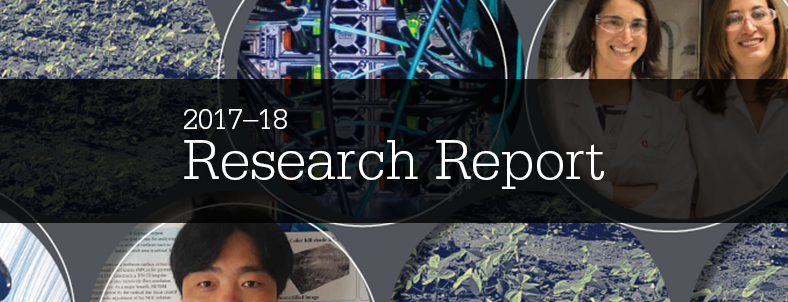Improving the tires we drive on can go a long way in improving the overall efficiency of operating the cars we drive.
Yalin Dong, Ph.D., assistant professor, and Chi Ma, graduate student in the University of Akron’s Department of Mechanical Engineering, is using the Ohio Supercomputer Center’s resources for a project designed to improve the rubber dispersibility in tires, thus decreasing energy loss and improving the rolling resistance of tires.
The typical filler for rubber—the base material in tires—is silica. The nature of silica’s surface often makes it difficult to achieve good dispersion in rubber, which results in energy loss and worse rolling resistance in tires. Dong is working to understand the reaction mechanisms of silane with silica and rubber during the mixing process to achieve excellent silica dispersion in rubber and reduce tire rolling resistance. Silane is the most widely used chemical agent for silica surface modification.
“Traditional silica-silane-rubber mixing is mostly based on experience and optimization,” Dong said. “The major novelty of this project is to establish an understanding of silane reactivity with both silica and rubber by combining experiment and simulation studies.”
By relating silane reactivity to silica dispersion, the rolling resistance and energy efficiency of tires can be qualitatively predicted by the model being developed through this research, according to Dong.
Dong’s project is assisting ongoing research by the National Science Foundation Center for Tire Research. He is collaborating with a University of Akron colleague, Jiahua Zhu, Ph.D., to understand mechanical properties of rubber from the molecular level and help with the fundamental understanding through experimentation.
Dong used LAMMPS (large-scale atomic/molecular massively parallel simulator) software for molecular dynamics simulations on the OSC Owens Cluster to better understand the reactivity of silane with rubber and filler on filler dispersion in the mixing process. He also used high performance computing simulations to develop “a process-microstructure relation to guide the experimental design.”
“Our research unleashed the potential of using molecular modeling to advance the understanding of filler dispersion,” he said. “Molecular dynamics simulation studies the behavior of material by capturing the dynamics of molecules. Therefore, it demands high performance computation in order to simulate a representative process in terms of size and time.
Project Lead: Yalin Dong, Ph.D., Department of Mechanical Engineering, University of Akron
Research Title: Quantify Silane Reactivity with Silica and Rubber for Improved Silica Dispersibility: Towards Lowering Rolling Resistance
Funding Source: University of Akron, National Science Foundation Center for Tire Research
Website:uakron.edu/engineering/ME/people/profile.dot?u=ydong

